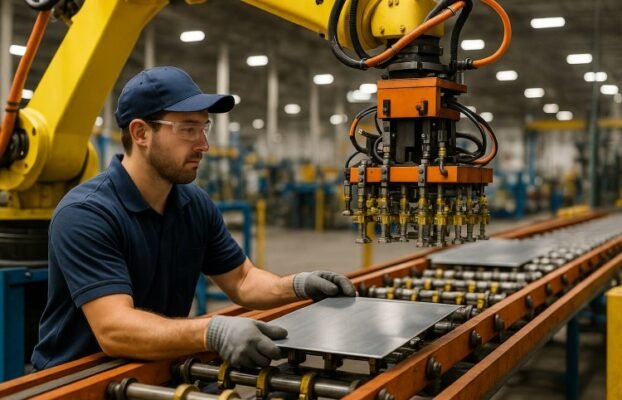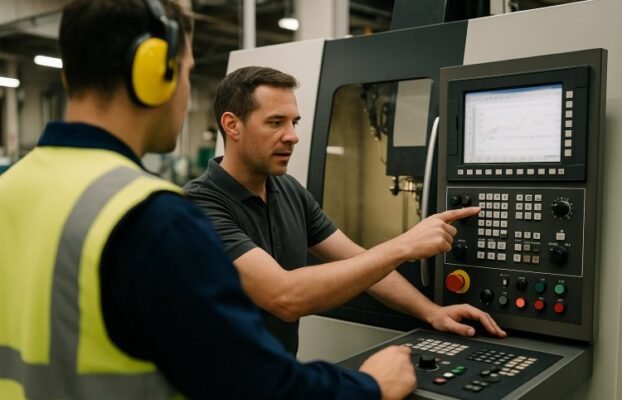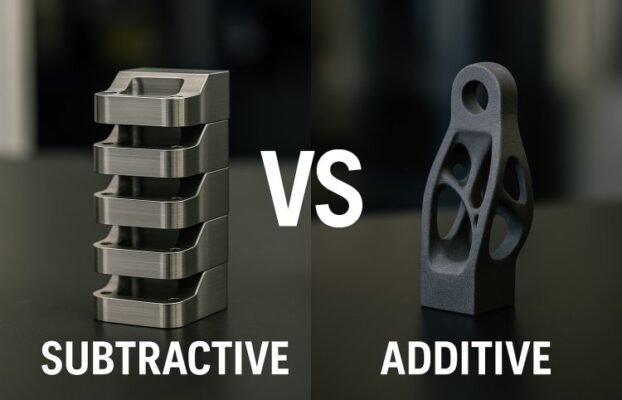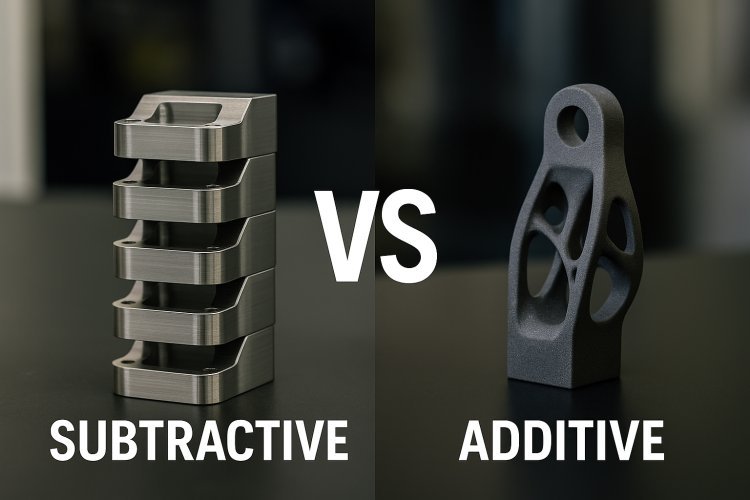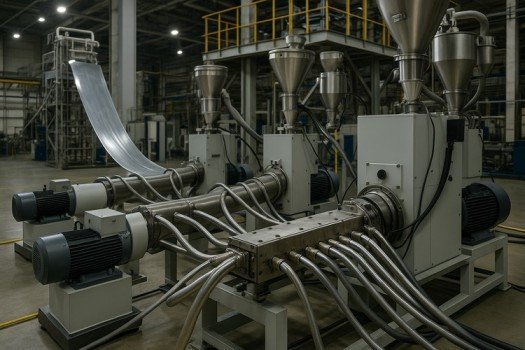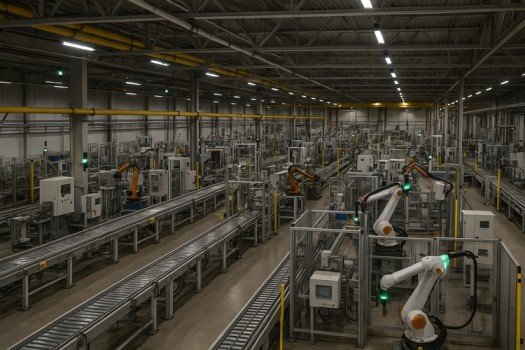Most companies think overseas equipment installations are basically domestic projects with extra shipping costs until their $400,000 production line sits in customs for three weeks because someone checked the wrong box on a form. I’ve watched installation teams stand idle in foreign warehouses, burning through daily rates, while a single missing compliance certificate held everything hostage. The difference between companies that succeed internationally and those that hemorrhage money comes down to one thing: they start international machine installation planning 6-12 months before the target installation date, not six weeks.
Installing industrial equipment in foreign markets requires coordinated planning across four critical areas: documentation and compliance, logistics and shipment, site preparation, and personnel management. An overseas equipment installation checklist helps ensure you don’t miss critical steps that can derail projects. That checklist needs to become your obsession because overseas installations punish improvisation viciously.
TL;DR
- Gather customs documentation, technical manuals, and compliance certificates for the destination country
- Arrange specialized crating, international shipping, and comprehensive transit insurance
- Verify site electrical systems, structural capacity, and local regulatory requirements
- Secure technician visas, plan training protocols, and evaluate local hiring needs
- Budget for currency fluctuations and establish post-installation support agreements
Why International Machine Installation Demands Strategic Planning
The industrial machinery market reached $714.5 billion in 2024, with increasing demand driving complex cross-border installations. Unlike domestic projects where you control most variables, overseas equipment installation involves navigating foreign regulations, managing extended supply chains, and coordinating across time zones and languages.
A single oversight in customs clearance procedures for industrial equipment can delay your project by weeks. I learned this when a client’s stone paper production line sat at Shanghai port for 19 days because we listed it under the wrong Harmonized Tariff Schedule code. That mistake cost $31,000 in storage fees, delayed production launch, and taught me that “close enough” doesn’t exist in international shipping documentation.
Voltage mismatches discovered during installation can halt operations entirely. Sites unprepared for equipment weight or dimensions create safety hazards and project cancellations. Contractor profit margins sit at just 7% in 2024, meaning installation delays directly impact your bottom line. When Plentiful Choices handles stone paper production line installations internationally, we see firsthand how proper preparation separates successful projects from expensive failures.
The companies that skip systematic planning face customs holds, equipment damage, and installation teams standing idle while waiting for missing components. Those who invest in thorough preparation complete projects on schedule and within budget, establishing reliable operations from day one.
The difference comes down to understanding that international installations aren’t just technical projects but logistical orchestrations. You’re not just moving equipment but managing relationships with customs officials, freight forwarders, local contractors, and regulatory bodies. Each stakeholder has different requirements, timelines, and expectations. Getting ahead of these complexities through strategic international machine installation planning transforms what could be a chaotic scramble into a managed process. Having a comprehensive production line strategy that accounts for international variables makes this achievable.
Essential Steps for International Machine Installation Planning
Preparing for overseas installations means building a structured approach that addresses every potential complication before it becomes a crisis. Most companies underestimate the timeline, thinking a few weeks of preparation suffice. In reality, thorough preparation spans 6-12 months depending on equipment complexity, destination country requirements, and whether you’re establishing new facilities or upgrading existing ones. This approach prevents the rush-induced mistakes that plague underprepared projects. Start by mapping your complete timeline backward from the desired installation date, then work forward through each preparation phase with adequate buffer time.

Documentation and Compliance Requirements
Every country handles imports differently. When preparing for customs clearance procedures for industrial equipment, you’ll find that requirements vary dramatically by destination, but all demand meticulous documentation prepared well in advance. Begin by obtaining the correct Harmonized Tariff Schedule (HTS) codes for machinery, which determine duty rates and import restrictions. Misclassified equipment faces delays, fines, or rejection at customs. Your freight forwarder can assist, but ultimately you’re responsible for accuracy. Prepare your commercial invoice, packing list, bill of lading, and certificate of origin with precise equipment descriptions, values, and country of manufacture.
Many countries mandate that technical documentation be provided in their official language for safety compliance and operator training. Translation of technical manuals requires professional technical translators familiar with industrial terminology, not automated translation that creates liability issues if instructions are misunderstood. I learned this the hard way when a client used Google Translate for installation manuals and the local safety inspector shut down the entire operation until proper translations were provided. That delay cost two weeks and $18,000 in idle technician fees. Beyond translation, you need proof that your equipment meets local safety standards and compliance requirements, whether CE marking for Europe, UL certification for North America, or country-specific approvals elsewhere.
Protecting your equipment during transit starts before it leaves your facility. Export crate preparation for machinery includes detailed packing lists showing every component, part number, and quantity so customs officials can verify shipment contents match documentation. Include photographs of equipment serial numbers and condition before crating as proof for insurance claims if damage occurs during transit. A comprehensive machine installation documentation checklist should track all these materials from packing through final site acceptance. When evaluating opportunities like stone paper investment in foreign markets, factor documentation costs and timelines into your financial projections from the start.
Logistics and Shipment Planning
Getting your equipment overseas safely starts with choosing the right partners. Machine shipment and logistics begin with selecting freight forwarders experienced in heavy industrial equipment. Not all carriers handle oversized or overweight machinery, and those that do charge premium rates. Request quotes early and compare not just pricing but transit times, handling capabilities, and claim histories. Specialized equipment needs custom crating designed to withstand international shipping stresses, with internal bracing, moisture barriers, and shock absorption appropriate to your machinery’s sensitivity.
Your shipping insurance needs to go beyond the basics. Insurance requirements for machine transit should cover full replacement value, not just equipment cost, and include installation expenses since damaged equipment delays projects and incurs additional costs beyond the hardware itself. Verify your policy covers ocean freight risks, warehouse storage at ports, and inland transportation to the final site. Read exclusions carefully. I once watched a company lose $120,000 because their insurance policy excluded damage from “improper packaging,” which the insurer claimed covered everything from a loose bolt to inadequate weather protection.
Coordinate shipping schedules with your installation timeline, accounting for potential delays at customs, port congestion, and inland transportation challenges. Asia Pacific dominates equipment markets with a 41.83% share, meaning shipments from this region face high demand and capacity constraints during peak seasons. Build contingency time into your schedule rather than assuming everything proceeds perfectly.
Site Preparation and Technical Requirements
Now let’s talk about what happens once your equipment clears customs. Site preparation for new machinery starts with a pre-installation site assessment checklist covering structural, electrical, and environmental requirements. Verify floor load capacity matches or exceeds your equipment weight, accounting for both static load and operational vibrations. Industrial machinery can exceed floor ratings in older buildings, requiring reinforcement before installation. Measure doorways, ceiling heights, and hallway widths to confirm equipment fits through the planned path, including consideration for assembly clearances if machines arrive partially disassembled.
One of the first complications you’ll hit during installation? Foreign voltage conversion for machinery addresses differences that can fry expensive equipment if ignored. What about machine electrical requirements abroad? They vary significantly, with North America using 110-120V at 60Hz, Europe using 220-240V at 50Hz, and other regions using different standards entirely. Simply changing plugs doesn’t work since frequency differences affect motor speeds and equipment performance. You need either dual-voltage equipment specified during purchase, step-up/step-down transformers rated for your machinery’s power draw, or a complete electrical system replacement, which is expensive and time-consuming.
Here’s another thing that catches people off guard: metric vs imperial conversion in installation matters for mounting hardware, utility connections, and spare parts inventory. European equipment uses metric fasteners, pipe threads, and dimensional specifications. Mixing standards creates maintenance nightmares and safety hazards. Standardize on one system and stock the appropriate tools and fasteners. Understanding stone paper applications helps you anticipate technical requirements for specialized equipment installations.

Personnel and Training Logistics
Getting your team to the installation site adds another layer of complexity. When planning for technician visa requirements for installation, know that these vary by country and can take weeks or months to process. Some nations require specific work permits for installation activities, while others allow short-term business visas for equipment commissioning. Research requirements early and apply immediately since delays here postpone your entire project. Your installation team needs valid passports, appropriate visas, and documentation proving they’re qualified technicians, not permanent workers attempting to circumvent immigration rules.
Once your team arrives, they’ll need places to stay and ways to get around. Travel logistics for installation engineers include flights, accommodation, ground transportation, and daily subsistence allowances that add up quickly on international projects—budget for extended stays since installations rarely finish on the initial projected timeline. The question of on-site machine operator training comes up during this phase too. Many manufacturers include commissioning and basic training, but comprehensive operator certification needs a separate arrangement and cost planning.
Your technical teams don’t just need visas and flights. Cross-cultural training for field service helps them navigate different business practices, communication styles, and workplace norms that affect working relationships with local staff and contractors. What works in your home country may offend or confuse in another.
I watched a talented technician nearly torpedo a Brazilian installation because he kept using the “OK” hand gesture, which is considered extremely offensive there. Simple cultural awareness training would have prevented that near-disaster. Before the equipment even leaves your facility, you need clear documentation about what happens after installation. The handover protocol for international projects should spell out acceptance criteria, testing procedures, and sign-off requirements that satisfy both parties.
You’ll face a choice about who actually does the installation work. Hiring local machine installers works differently from sending your entire team overseas. Local contractors understand regional building codes, have established relationships with inspectors, and navigate local labor regulations for installation more efficiently than foreign teams unfamiliar with the area. However, they need clear specifications and oversight to ensure installations meet your standards. A hybrid approach using your technical lead with local labor often provides the best balance of expertise and local knowledge.
Budget and Risk Management
The financial side of overseas installations has hidden complexities. When budgeting for international machine installation, you need more than equipment cost plus shipping fees. Account for customs duties and tariffs, which vary by country and equipment type, potentially adding 10-30% to your total cost. Currency exchange rates fluctuate constantly. Understanding foreign currency risk in installation projects means building contingency funds or locking in exchange rates through forward contracts if your budget allows zero flexibility for rate changes between planning and payment dates.

Protecting your investment extends beyond the initial installation. International service contracts for machinery define how warranty claims get handled, where parts get sourced internationally, and what response times apply for service calls. Clarify who handles warranty management for exported equipment and how claims actually get processed across borders. Equipment malfunctions after installation create expensive problems. Post-installation support in foreign markets becomes critical when equipment breaks down and local technicians lack familiarity with your specific machinery. Some manufacturers offer global support networks, while others require you to manage service independently.
Build contingencies of 15-20% into your budget for unexpected complications. International projects face risks that domestic installations don’t encounter, from political instability to supply chain disruptions to regulatory changes. The companies that budget aggressively with no buffer invariably exceed their financial limits, while those with realistic contingencies absorb problems without project cancellation.
| Preparation Phase | Timeline Before Installation | Critical Requirements | Common Pitfalls |
| Documentation | 6-12 months | HTS codes, customs forms, compliance certificates, and manual translations | Incorrect tariff classification, missing certificates, poor translations |
| Logistics | 4-6 months | Freight quotes, specialized crating, insurance coverage, and shipping schedule | Inadequate crating, insufficient insurance, and underestimated transit time |
| Site Preparation | 3-6 months | Structural assessment, electrical verification, access measurements | Inadequate floor capacity, voltage incompatibility, and insufficient clearances |
| Personnel | 2-4 months | Visa applications, travel arrangements, training coordination, and local hiring evaluation | Visa delays, inadequate training time, and poor cultural preparation |
| Budget/Risk | Ongoing | Currency hedging, service contracts, contingency funds | Insufficient contingency, unhedged currency exposure, unclear warranty terms |
Final Considerations
Effective preparation separates companies that expand successfully into foreign markets from those that struggle with delays, cost overruns, and operational failures. The preparation work described here seems extensive because it is, but each element prevents specific problems we’ve seen derail projects. Plentiful Choices has coordinated installations across multiple continents, and the consistent pattern is that thorough preparation correlates directly with smooth installations. Start planning 6-12 months before your target date, involve experienced partners who understand international logistics and compliance, and budget realistically with adequate contingencies. The investment in proper preparation pays for itself many times over through avoided delays, prevented equipment damage, and installations that achieve operational status immediately rather than months later after correcting mistakes.
FAQ
Comprehensive planning typically requires 6-12 months from initial planning to equipment operation. This timeline includes documentation preparation, logistics coordination, site readiness, and personnel arrangements, with longer timelines needed for complex equipment or challenging destination countries.
The most common issues include incorrect Harmonized Tariff Schedule codes, incomplete documentation, missing compliance certificates, and discrepancies between shipping documents and actual equipment. These problems cause delays ranging from days to weeks and may result in fines or equipment rejection.
Most successful international installations use a hybrid approach with your technical lead supervising local installers who understand regional regulations and building practices. Fully independent local installation requires extremely detailed specifications and oversight, while sending your entire team overseas increases costs significantly without leveraging local expertise.
Address voltage differences by specifying dual-voltage equipment during purchase, installing appropriately rated step-up or step-down transformers, or completely replacing electrical components to match local standards. Frequency differences between 50Hz and 60Hz systems affect motor speeds and require equipment modifications beyond simple voltage conversion.
Transit insurance should cover full replacement value including equipment cost, shipping expenses, and installation costs rather than just the hardware purchase price. Verify coverage includes ocean freight risks, port warehousing, inland transportation, and doesn’t exclude damage from inadequate packaging or handling since these are common claim denial reasons.
Reference
[1] GM Insights – Industrial Machinery Market Size, Forecasts Report 2025-2034 https://www.gminsights.com/industry-analysis/industrial-machinery-market
[2] Fortune Business Insights – Construction Equipment Market Size, Share & Forecast https://www.fortunebusinessinsights.com/industry-reports/construction-equipment-market-100521
[3] Turner & Townsend – International Construction Market Survey 2024: Global Construction Cost Performance https://publications.turnerandtownsend.com/international-construction-market-survey-2024/global-construction-cost-performance

